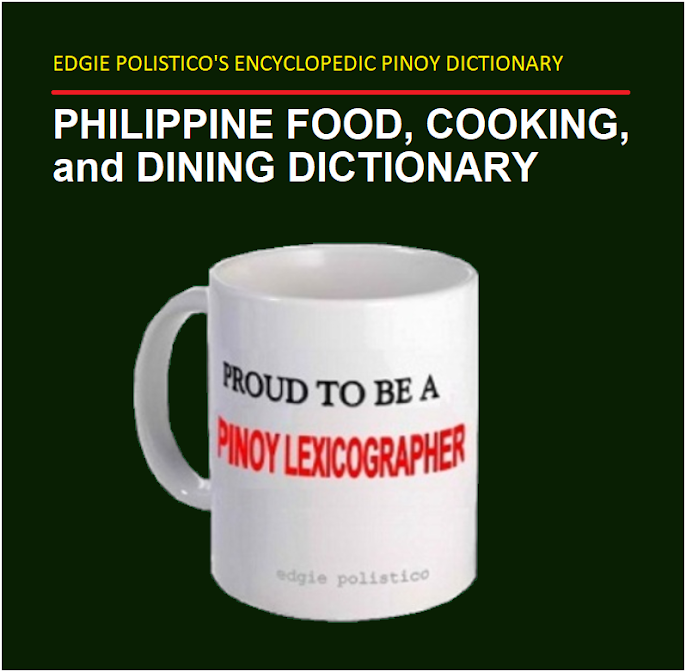snake wine - /es-nek wayn/ Cebuano and Tagalog wine [n.] a spirit soaked with a snake.
A freshly killed snake (complete with its scales, skin, flesh, bones, and internal organs) is steeped in spirit or clear (transparent) distilled wine until the juice from the body of the snake partly became the flavor of the wine.
Snake wine is taken as a potent drink and is believed to have some medicinal benefits, add vitality, energy, and as an aphrodisiac or something that boosts one’s sexual appetite.
.JPG&container=blogger&gadget=a&rewriteMime=image%2F*) |
The authentic "Cobra Energy Drink." Unlike the commercially bottled cobra energy drink, this snake wine will not cause you to worry about having diabetes. The snake wine has no sugar added in it. What you will get is a real cobra in a bottle - not just a label with a drawing or printed illustration of snake.
The usual kind of snakes used in making snake wine are those that are highly poisonous like the dreaded Philippine king cobra (Naja philippinensis) known as banakon in Cebuano or ulupong in Tagalog. Another known highly venomous snake is the Cebuano iliw.
The usual spirits used as a base for this potent drink are the hinebra (gin), vodka, lambanog (Philippine coconut arrack), anisado (anise wine), and naturally fermented rice wine.
The usual spirits used as a base for this potent drink are the hinebra (gin), vodka, lambanog (Philippine coconut arrack), anisado (anise wine), and naturally fermented rice wine.
.JPG&container=blogger&gadget=a&rewriteMime=image%2F*) |
To convince me that it is safe to drink snake wine, this man swigs a shot of snake wine. |
See me sampling a shot of snake wine that is made with rattle snake from Kiangan, Benguet. Click or tap the photo, below, to watch the Facebook video.
SNAKE WINE from Kiangan, Benguet is very expensive. This one is of rattle snake in lambanog with ginseng root. I don't know how they got rattle snake here in Benguet. A shot glass is P150.00. Every drip counts. (June 08, 2018)
All photos by Edgie Polistico are copyrighted. ALL RIGHTS RESERVED.
Continue to follow my blogs. You can also follow and learn more by joining us in our Facebook group account of Philippine Food Illustrated (Private) and Philippine Food Illustrated (Public). It is my pleasure to rediscover the known and least known things or the unheard ones and put them here for everyone to find, learn, and treasure.
Thank you for all the encouragement and enthusiasm. I need also moral support, prayers, and anything else that can uplift my spirit and keep my good reasons.
If you are pleased or happy with this blog, please share the PHILIPPINE FOOD ILLUSTRATED. It is energizing that my blog is shared with others.
Edgie Polistico
For more about Filipino food, you must try this Philippine Food, Cooking, and Dining Dictionary. It is OPEN and FREE.

.JPG&container=blogger&gadget=a&rewriteMime=image%2F*)
.JPG)














